In the pre-internet age, journalists’ careers were inextricably linked with the outlets they worked for. But the rise of social media and other tech platforms has allowed many individual journalists – along with many others, whether activists, creators, influencers, or political figures – the opportunity to break away and build their own profiles independently of any particular news brand. As we heard in the previous chapter, some journalists have used email or subscription platforms to monetise their personal connection with audiences – enabling the most successful few to make significant amounts from subscriptions. Elsewhere, within mainstream media itself, the price of top journalistic talent has risen substantially in an increasingly competitive media landscape – especially for those news anchors, columnists, commentators, and podcasters who are able to attract significant audiences.
But to what extent do people identify with individual journalists rather than news brands?
Do the journalists people say they pay attention to represent individual entrepreneurs, newer digital-born brands, or are they mainly drawn from traditional brands in radio, television, or print? And are the journalists whom people are able to name mainly trading in facts or opinion? To address these questions, for the purposes of this chapter, which combines qualitative and quantitative survey responses, we focus on six countries – the US, UK, Brazil, Germany, France, and Finland – that represent different media landscapes and journalistic traditions across our wider sample.
An episode on the chapter
Listen on: Spotify | Apple | Google
News brands or journalists?
We asked respondents in our survey whether they paid most attention to specific journalists or to news brands when looking for news online. Looking across our six countries, we see significant differences in terms of the attention paid, with stronger affinity toward news brands in Northern/Western European markets such as Finland, Germany, and the UK, but greater identification with individual journalists or commentators in Brazil and France. The United States is somewhere in the middle, with around a third paying most attention to brands and a fifth to journalists.
Accounting for this strong affinity with news brands, we note that countries like Finland, Germany, and the UK have historically strong national media brands which have largely managed to maintain a direct connection to audiences as they have transitioned online. In Finland, for example, 65% say they prefer to access news online by going directly to a branded website or app. By contrast, audiences in the United States (24%), France (15%), and Brazil (11%) are less likely to prefer news access via branded sites and are more dependent on social media for news access (where personalities attract attention and brands can sometimes find it hard to cut through).
Other explanations may relate to the types of journalism that are practised in different countries. Public service media in Finland (Yle), Germany (ARD, ZDF), and the UK (BBC) are large and well-known, and their journalists bound by impartiality rules. By contrast, news in Brazil and the United States is mostly commercial, with some media built around controversy, emotion, and the strong opinions of journalistic personalities.
To understand more about these dynamics, we asked respondents to name up to five specific journalists they pay attention to, using an open-ended question in our survey. Across countries, less than half of our sample named a single journalist, though this may be at least partly due to low response rates in general for these types of open questions. We focus in the following sections on the journalists who were named in six countries.1
UK and US compared
We find that the most-named journalists in the UK are political correspondents, who appear regularly on TV. Both the BBC’s Laura Kuenssberg and ITV’s Robert Peston have been on screens most evenings for several years, covering the Brexit fallout and COVID-19 pandemic, but they are also prolific across social media channels – with 1.3m and 1.2m Twitter followers, respectively. Also high on the list is Piers Morgan, a news presenter who has forged a reputation for strong personality-based interviews and who has almost 8m Twitter followers. Three opinion columnists from the Guardian also make the top list, a testament to the high online reach of the left-leaning publication which doesn’t have a paywall. The BBC accounts for a third (34%) of all mentions, followed by ITV (12%) and the Guardian (11%).
Ten most-mentioned journalists and their roles
United Kingdom
-
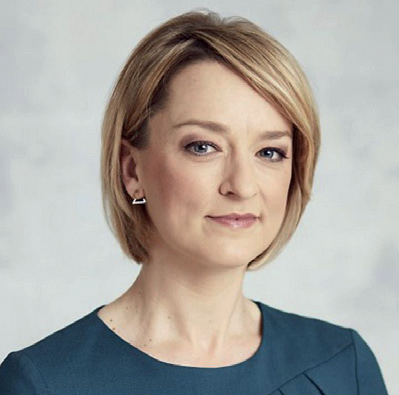
Laura Kuenssberg
BBC
-
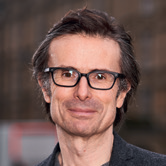
Robert Peston
ITV
-

62%
of the journalists mentioned are from ‘impartially regulated’ broadcasters such as the BBC, ITV News, Sky News, Channel 4, GB News, Talk Radio and LBC.
Turning to the United States, we find respondents paying attention to journalists who express a higher degree of opinion and political partisanship. Cable TV hosts such as Tucker Carlson and Sean Hannity from Fox News and Rachel Maddow from MSNBC have the most name recognition, with TV presenters and anchors accounting for the entire top-ten list. Over half (53%) of the most-recognised journalists work for just three organisations: Fox News, NBC/MSNBC, and CNN.
Ten most-mentioned journalists and their roles
United States of America
-
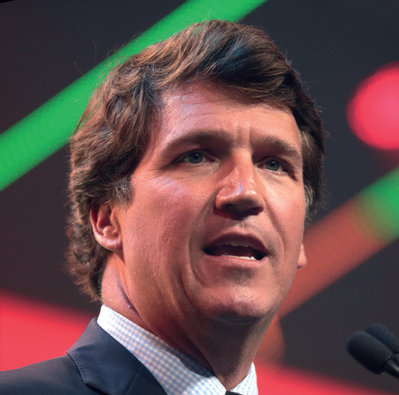
Tucker Carlson
Fox
-

Rachel Maddow
MSNBC
-

74%
of the journalists mentioned are TV or radio broadcasters, with a significant portion hosting ‘partial’ opinion-based shows on channels such as Fox and MSNBC.
This list reminds us that cable TV continues to punch well above its weight in engaging Americans with the news. Cable personalities, despite the criticisms often levelled at them, draw attention and remain memorable to audiences. They also feature prominently on digital channels, further increasing their visibility. On Twitter alone, Rachel Maddow has over 10m followers, while Tucker Carlson has over 5m.
Only around one in ten (9%) of US journalists mentioned is employed by a print outlet, compared with almost a third (30%) in the UK. Columnist Peggy Noonan is among those named from the Wall Street Journal, while columnists at the New York Times, such as Paul Krugman, Maureen Dowd, and Ezra Klein, also feature. About one in seven (14%) work for a digital-born news organisation – a much higher figure than in the UK (around 2%).
TV dominates in Brazil and France but not so much in Finland
Similar to the US, television journalists are prominent in the most-named lists in Brazil and France. In Brazil, William Bonner, anchor for the country’s popular Jornal Nacional, heads the list, followed by crime TV presenter José Luiz Datena and another TV Globo presenter, Maria Júlia (‘Maju’) Coutinho. The vast majority (86%) of named journalists in Brazil are presenters or anchors from broadcast media, and more than four in ten (41%) work for TV Globo, just one part of Brazil’s biggest news and entertainment company, reflecting the powerful position of this brand. A further fifth (17%) work for other top broadcasters Record TV or Band TV. Just 4% of the journalists mentioned work for any print outlet.
The story in France is very similar, with, if anything, an even greater focus on TV news presenters. Nine in ten journalists named in France work in broadcast media, primarily at television outlets such as TF1 and France Télévisions – which received 23% and 21% of mentions, respectively. Topping the French list are TV presenters Pascal Praud and Anne-Claire Coudray. As in Brazil, journalists from national newspapers like Le Monde and Le Figaro are rarely mentioned, with only 6% of names coming from print media. Neither country sees any significant number of journalists from digital media outlets named (4% in Brazil, 3% in France).
The picture in Finland, meanwhile, is a little different. Like the UK, there is more focus on journalists from print media, with over a third (37%) of names being columnists or reporters for outlets such as Iltalehti, Ilta-Sanomat, and Helsingin Sanomat. Together, these papers received a third (32%) of mentions, reflecting the continued prominence of print news brands in Finland. Public broadcaster Yle received 35% of mentions, with presenter Matti Rönkä ranking first equal alongside former Yle presenter (and current AlfaTV presenter/Iltalehti columnist) Sanna Ukkola. Among the most-mentioned brands is also MTV3, with 22% of named journalists working for this outlet. In all, six in ten (60%) journalists named in Finland work for broadcast media – a lower figure than other countries, but still high. Again, journalists working for digital-born media do not feature prominently.
Finally, an in-between country is Germany, where there are somewhat more print journalists (19%) named than in Brazil or France, but fewer than the UK and Finland. Those named are spread across outlets including Die Welt, Die Zeit, and Der Spiegel. The proportion of journalists named from broadcast media is also in the middle of the pack (70%), with this seven-in-ten figure being largely driven by the prominence of ARD, ZDF, and RTL, which make up two-thirds (64%) of mentions. Reflecting the wide popularity of these broadcasters, the most-named journalists are ZDF heute-journal anchors Marietta Slomka and (formerly) Claus Kleber, alongside RTL aktuell host Peter Kloeppel.
Most occurring brands by journalists named
-
-
France
-

-

-

-
-
-
Brazil
-

-

-

-
-
-
USA
-

-

-
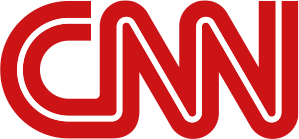
-
-
-
Germany
-

-
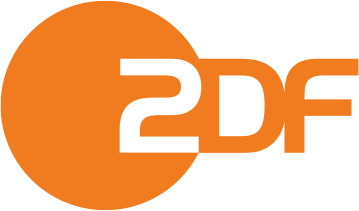
-

-
-
-
UK
-
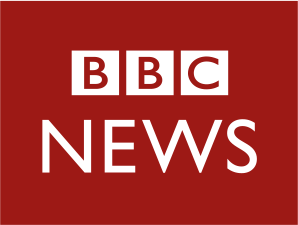
-

-

-
-
-
Finland
-

-

-

-
Q _Journalists_2. Please type in the names of up to five journalists that you regularly pay attention to (e.g. news presenters, columnists, or reporters). Base: All who mentioned the name of a journalist: France = 723, Brazil = 1008, USA = 635, Germany = 327, UK = 576, Finland = 431.
How diverse are the names?
Across the six markets, the majority of journalists named are men, with the proportion as high as 71% in Brazil and 70% in the US.2 Only Finland is anywhere near parity in the gender balance of named journalists – 59% are men.
Gender disparities also persist across media, with only a third of names in broadcast media and four in ten names in print media being women, on average, across countries. These numbers are yet another reflection of the lower visibility of women in the news media (Eddy et al. 2022a).
Across our six countries, some specific outlets, however, see more equality. The BBC nears gender balance in named journalists, with 46% of mentions being women. This is similar to ZDF (47% women) and France Télévisions (53% women). On the other hand, top-named print reporters and columnists in places like the UK, US, and Germany tend to be overwhelmingly male.
While these numbers do not necessarily reflect the percentage of men versus women who are employed in the news media, they are a reflection of the prominence that some – mostly male – journalists have in the public eye. This imbalance in visibility is further reflected when we look at white and non-white journalists named. In the UK, 9% of journalists named are non-white, while the figure is 16% in the US. Both figures are far below the percentage of non-white people in the general population in each country, perhaps again indicating a lack of non-white visibility in journalistic and top editorial positions (Eddy et al., 2022b).
What is a journalist?
An interesting outcome of this data collection is that it shows the audience’s definition of what it means to be a journalist is now much wider than ‘someone who works for mainstream media’. According to our respondents, journalists can now include YouTubers, podcasters, comedians, authors, and social media influencers. Those whom we classified as ‘alternative’ or ‘independent’ account for around 15% of all named journalists in the United States, but far less in all other countries.
This striking US figure is boosted by mentions of numerous individuals from the vast conservative/right-wing media ecosystem. They include conservative activists and provocateurs, and some high-profile named individuals are also associated with alt-right and conspiracy movements. Having been repeatedly accused of spreading misinformation, some have been banned from social media but maintain connection via websites, video channels, and newsletters. Respondents to our survey who pay attention to these alternative sources overwhelmingly self-identify on the right or the far right. But we also find another group of independent journalists that include former mainstream journalists like Megyn Kelly (ex-Fox News and NBC) and Katie Couric (ex-ABC) who have now set up on their own and operate across multiple channels.
In Brazil, there is also a lively independent scene with popular YouTube channels hosted by former TV anchors, such as Leda Nagle, and younger stars like Zoe Martinez, who combines political and social discussions with personal vlogging adventures. In Germany, YouTuber and podcaster Tilo Jung attracts the attention of some younger respondents to our survey with a persona of a naive young man who asks his guests very basic questions about the news (Jung & Naiv).
Meanwhile, in parts of Europe, alternative perspectives are increasingly reflected in the mainstream media itself. Right-leaning politicians like Nigel Farage (GB News) and Éric Zemmour (CNews) – who stood in the French presidential elections this year – have worked as presenters or political commentators, and both featured in our named lists. This ‘politicisation of journalism’ may be one additional factor contributing to low trust in the news.
Conclusions
The fact that so many people struggled or were not inclined to name even a single journalist reminds us that many people do not pay as close attention to the news as the industry might hope. News brands continue to hold more relevance to people – particularly in places like Finland, Germany, and the UK – and when people do name journalists, they tend to be male and on television. Does this mean there is a visibility problem? Although every country has a woman in the top three most-named journalists, the lists become more male as you move down them. A perceived lack of real diversity may be contributing to the lack of engagement, especially with a younger generation who want more representation.
The prominence of television news anchors and commentators when compared with journalists from digital or print outlets also reminds us of the importance of this medium in forging a deeper connection with audiences. While print journalists are a little more prominent in the UK and Finland, across all markets there is a power that TV – far more than social media on its own – has to cement the names and faces of ‘celebrity’ journalists who anchor for major networks and popular shows. In some countries, these popular names are newsreaders with a commitment to impartiality, but in others they are partisan hosts. This ‘politicisation of journalism’ – including the increased prevalence of politically motivated alternative vloggers and podcasters, particularly in the US – may have associations with low trust in news.
But is also striking that the most successful journalists have not stuck to a traditional medium. They have embraced new channels such as social media and this has enabled their journalism to be available 24 hours a day across platforms – further increasing their profile and reaching a much wider audience in the process.
Low representation of vloggers, podcasters, or other individual journalists is perhaps an inevitable function of the difficulty of scaling these models, but it is interesting to pick up the growth of this new type of entrepreneurial journalism, especially in the United States. This is changing expectations of what a journalist might look like, bringing in a wider and more diverse set of voices, as well as, in some cases, louder and more extreme ones, too.
Additional thanks to Sascha Holig, Camila Mont'Alverne, Esa Reunanen, and Georgia Newman for coding open-ended responses in Germany, Brazil, Finland, and France respectively.
Footnotes
1 Analysis was performed on unweighted data. Named journalists were coded the same way across markets. They were classified according to (i) the media market they work in, (ii) their gender (male/female), (iii) their race/ethnicity (white/non-white; UK and US only), (iv) the primary news outlet they work for, (v) the type of media outlet they work for (broadcast, print, digital-born), and (vi) their main role (e.g. presenter/anchor, correspondent/reporter, columnist/commentator, other). Some journalists worked for more than one news outlet and had multiple roles. In these cases, journalists were classified by the outlet/role they are best known for in the public eye. In some cases, we deferred to journalists’ self-descriptions of their primary outlet and role. ↩
2 Following work on the representation of race in editorial positions in communications research (Chakravartty et al. 2018; Hesse, 2016), we operationalised race here by adopting a conceptualisation that contrasts institutionally dominant white populations and dominated non-white populations. This language and history differs across the countries we study, but what we’re specifically referring to here are present-day hierarchies tied to colonial legacies of empire, militarism, and Apartheid. This is the same approach we have used in previous research (Eddy et al. 2022), and as in the past, we want to be clear: race and racial discrimination work in complex ways not always tied to skin colour, for example where it has a religious dimension. There are also dimensions of ethnicity that are not always related to conceptions of race. However, a white/non-white conceptualisation captures some important aspects of this in the countries we cover. We therefore deploy a simple and reductionist, but hopefully still illuminating and relevant, binary, and code each journalist (US and UK ONLY) as white or non-white. Non-white is in no way meant to suggest an identity, let alone a homogeneous group, given the great diversity and complexity of people’s identities, but it provides a way to categorise otherwise very different people who come from institutionally dominated ethnic and racial groups. It helps us point to a dimension of inequality at a macro level. ↩


